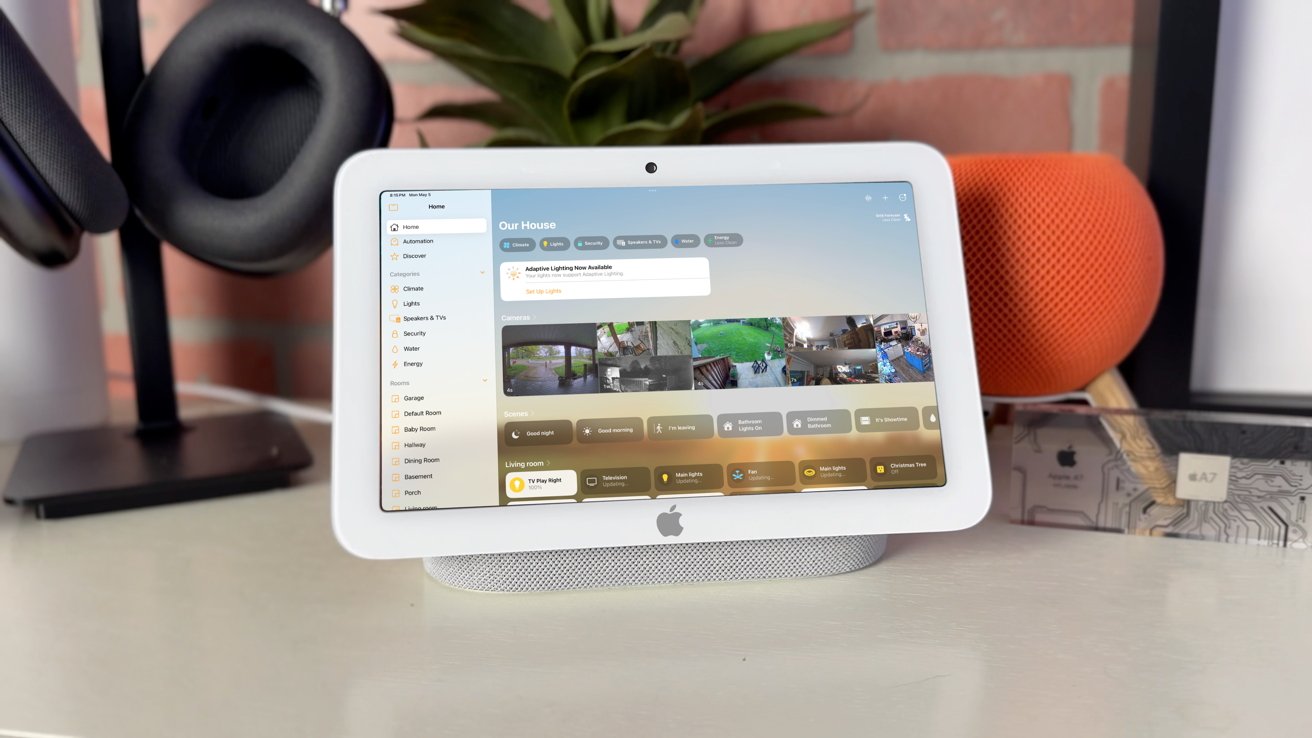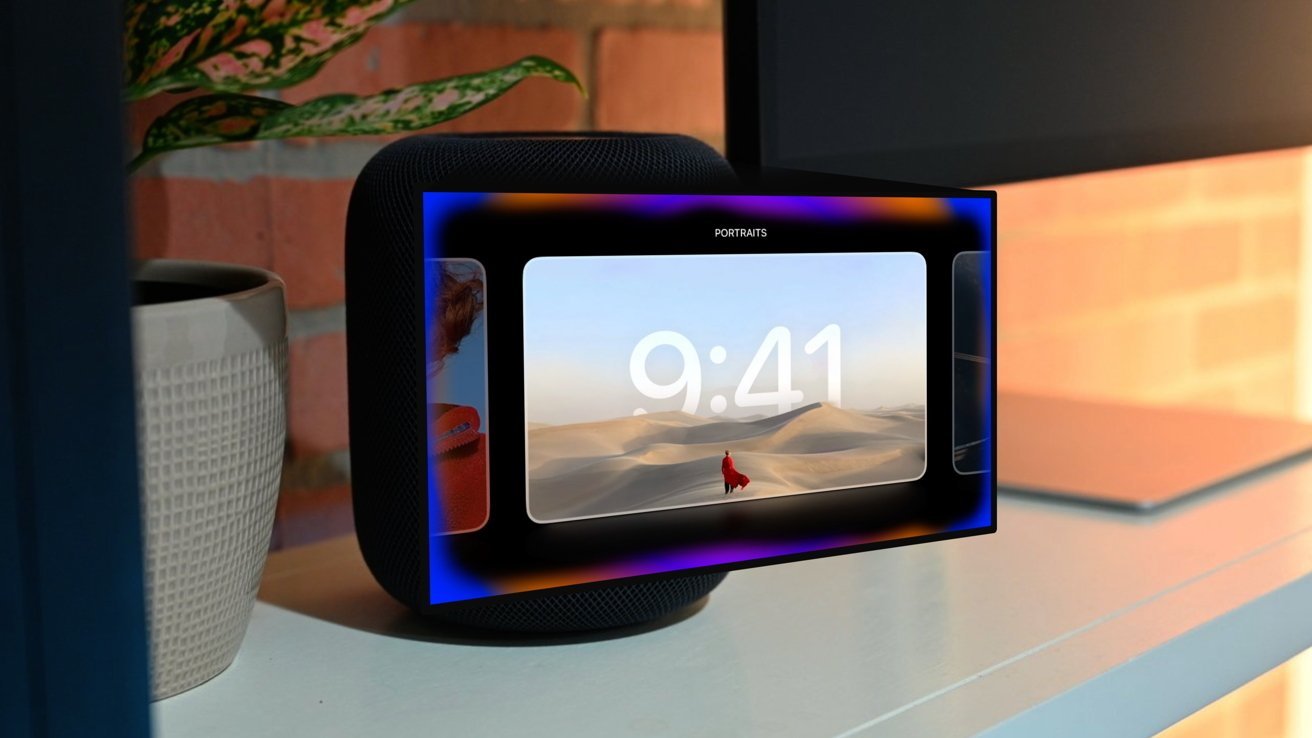Apple is rumored to be on the precipice of releasing a new software platform to control your entire home. Here’s what’s been rumored about homeOS.
Spawned from a common core, Apple has been creating branches of its operating systems for its hardware for years. There’s watchOS for the Apple Watch, iOS for the iPhone, iPadOS runs on iPad, and so on.
Rumors about homeOS have been circulating for years at this point. There have been references within Apple’s code that points to a new software platform, either as a wholly new addition, or as a replacement to some of its existing ones.
So far, it looks like the latest fork is called homeOS. And to date, no product uses this software.
This is what the rumors have told us so far, and when we may see it revealed.
What is homeOS?
Apple’s homeOS has remained unofficial, though that seems poised to change in the not too distant future. It is rumored to be the operating system for Apple’s upcoming smart home display.
This iPad-smart speaker combo device is set to launch later in 2025, though the release has been in flux. It could be further delayed because of Apple’s ongoing Siri turmoil.
Like Apple’s HomePod software, homeOS is based off of Apple’s tvOS platform. We can presumably infer some of what the homeOS interface will look like because of that.
In our opinion, the new screensaver switching interface Apple added with tvOS 18 is far more suitable for a countertop smart screen than your TV. Other interfaces like the new Control Center or Music app with lyric view would look at home as well.
One point to ponder is whether the new homeOS will replace tvOS and the generic HomePod software, or if it will exist on its own. Only time will tell how Apple chooses to proceed with these overlapping systems.
The primary use case of homeOS will be smart home control.
It will be a center point in your home to see who is at your door, if you left a window open, to control your shades, help you follow a recipe, communicate with others, and get answers to questions.
Of course, that means it will support Apple Home — formerly HomeKit. That is Apple’s smart home framework used on bulbs, switches, and many more device types.

Apple’s homeOS will be beneficial in controlling your home
Along with Apple Home is Mattera, a unifying smart home standard that allows devices to work in Apple Home, Google Home, and Amazon’s assistant with a single certification.
In our homes, we can control our shades based on the time of day, lock and unlock our doors remotely, run the vacuum, adjust the temperature, and more thanks to Apple Home.
Apple’s homeOS will be able to act as a Home Hub for these accessories. This is what enables secure remote access, as well as local video processing for people, animals, cars, and packages.
Lastly for the smart home, it will act as a Thread border router. Previously, only Apple TV and HomePod could handle this task.
Thread is an emerging wireless protocola that creates a self-healing mesh network across your home for accessories to communicate. In many ways it’s preferable to Zigbee, Bluetooth, or Wi-Fi for certain devices.
Apple has built usable Thread radios into iPhone, Apple TV, and HomePod for years now. There are Thread radios in other Apple devices too, though Apple has yet to activate them.
Core to the homeOS experience will be be Siri and Apple Intelligence. Apple’s new platform will very likely support the next-generation, more personal version of Siri that will be more capable of getting things done.
Especially by voice.
HomePod and HomePod mini are both able to differentiate people who are talking to them based on their voice. The new OS should work in a similar way.
This will help the OS provide the correct answers and information to the relevant user.
When it comes to the home screen and interface, we don’t entirely know. It could look like the Apple TV interface or it could be more like the iPad.

Another mockup of an Apple smart display
We’d guess more the former, but it will likely be some sort of combination.
You can expect there to be widget support, similar in design to Apple’s StandBy mode found on iPhone. There’s also talk of a distance-aware screen.
The screen could change what it shows, based on how far away you are. This isn’t an entirely new premise though.
Even our Ecobee thermostat does this where it shows one interface when you’re far away, but then changes to be more information-dense as you approach.
Apple could show you the Snoopy screensaver with the time when you’re across the room but switch to widget view or the Home Screen as you get close.
As far as apps go, many of Apple stock apps should be supported. Apple TV, Home, Music, Podcasts, Weather, Photos, and News will likely be there, to name a few.
News just saw a sizable update that will be perfectly suited for homeOS. It has a new cooking feature that includes a step-by-step guide for your recipes.
Users could view recipes on their iPhone or iPad, save their favorites, then use Siri to open the step-by-step cooking guide on their homeOS device. Using Siri app intents, we wouldn’t be surprised to see the ability to jump step to step with your voice too.
Lastly, and this is a major downside for us, there won’t be support for third party apps. At least at launch.
Apple could easily add developer support over time, but we’d be very sad to see this entire new device and be limited to only Apple’s stock apps.
This homeOS seems powerful and it would be great to see how developers could make use of this entirely new platform. Perhaps next year with homeOS 2…
When will homeOS be announced?
The arrival of homeOS is still up in there. Apple could opt to transition other devices like Apple TV and HomePod to homeOS.
If that happens, it could make its official debut at WWDC 2025 this summer. If Apple is going to keep it exclusive to its smart display, it would be fall of 2025 at the earliest.
Should Apple’s smart display get punted down the line again, that could further delay the software platform. Hopefully that would just give Apple more time to add additional features.
Stay tuned to AppleInsider where we’ll continue to report on any additional leaks ahead of the release.


